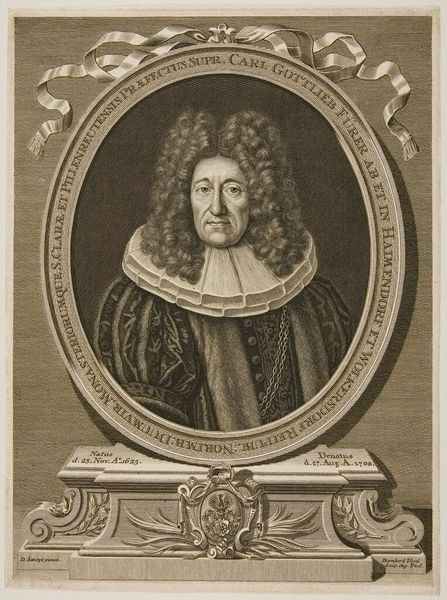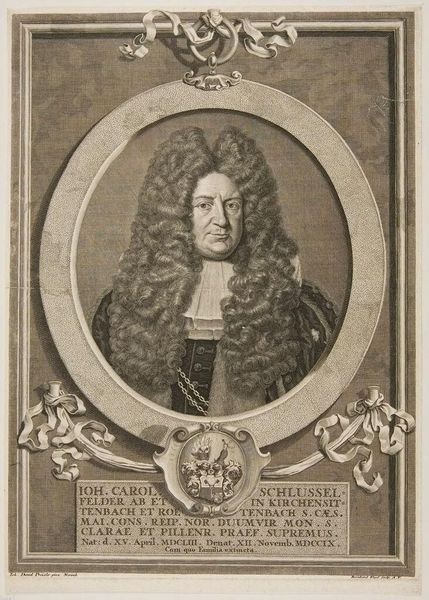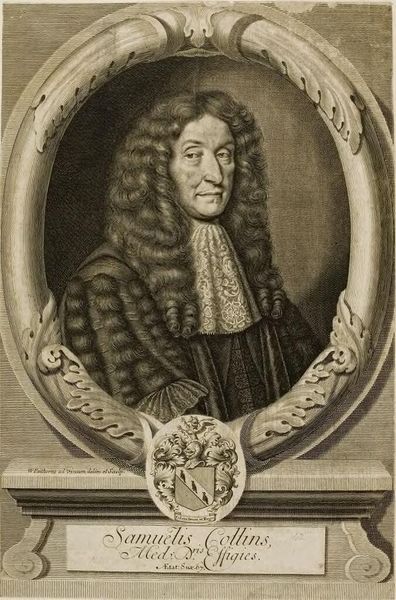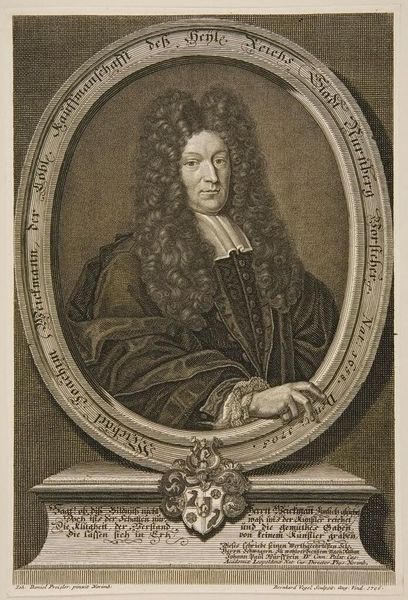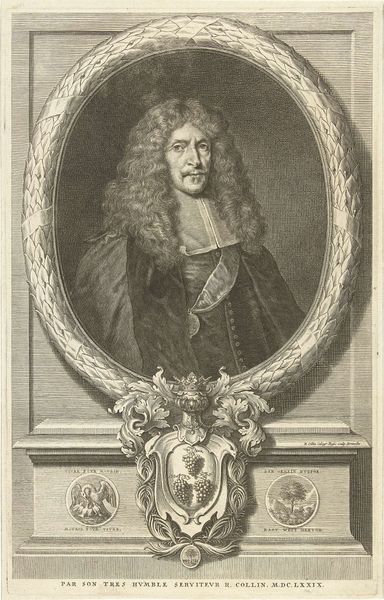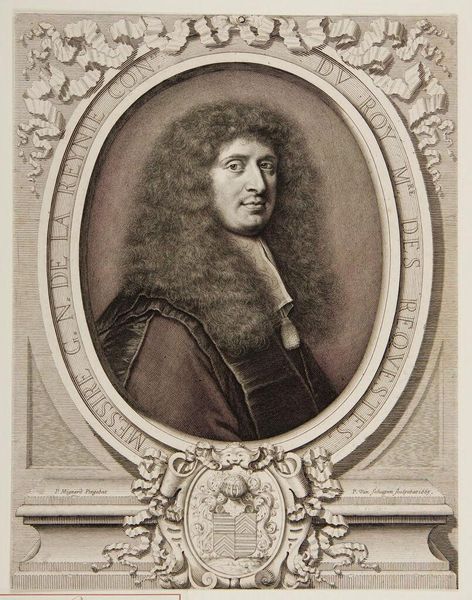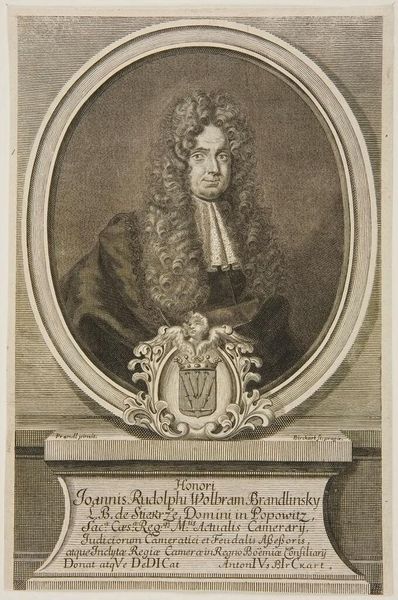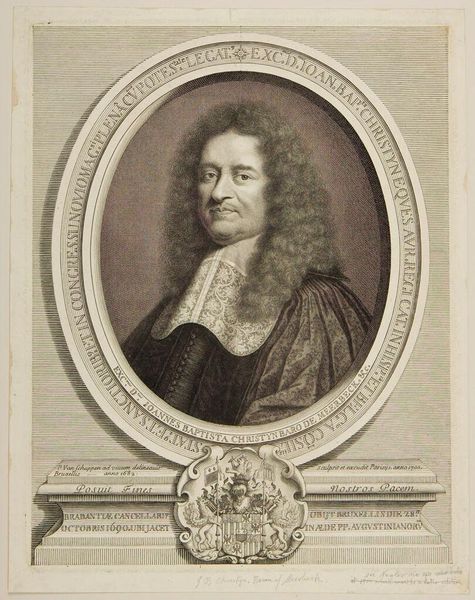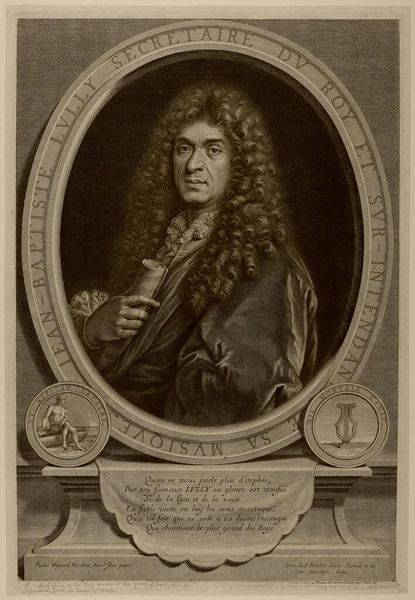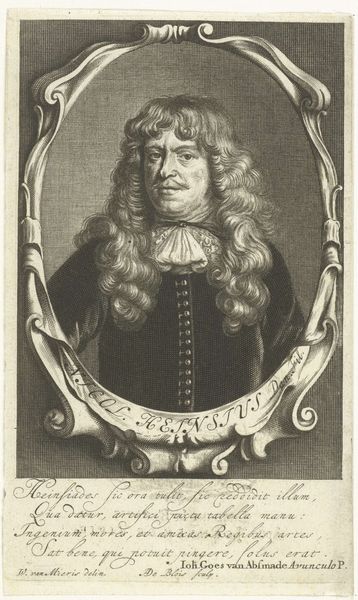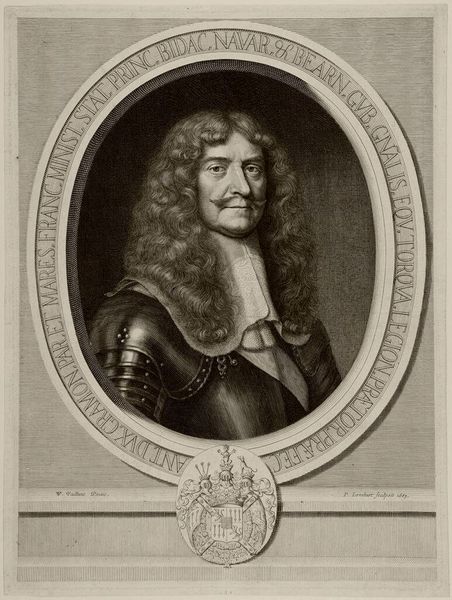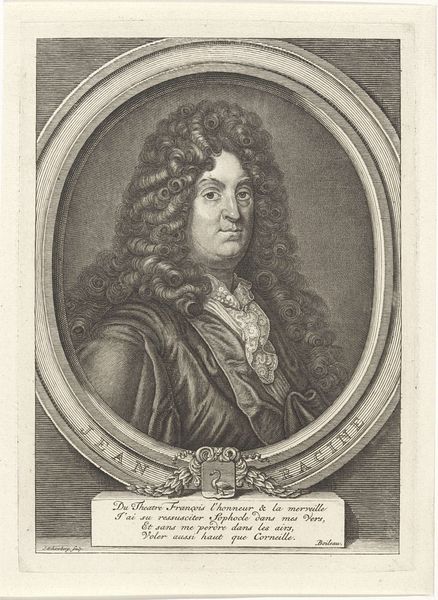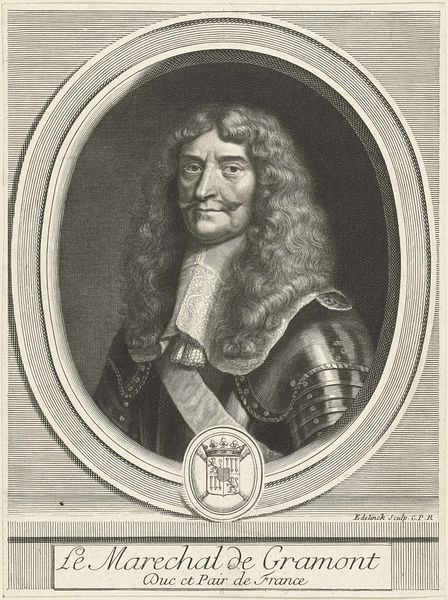
Copyright: CC0 1.0
Editor: Here we have Andreas Matthäus Wolfgang’s portrait of Sigismund Jakob Holzschuher, a striking depiction even without a precise date. It feels like a statement of power and status. What do you see in this piece, beyond the obvious opulence? Curator: This portrait speaks volumes about the social structures of its time. Holzschuher's elaborate wig and attire weren't merely fashion statements. They were conscious displays of wealth and belonging to a privileged class. How does the inscription surrounding the portrait reinforce this message? Editor: It lists his titles and dates, solidifying his identity and place. Curator: Exactly. The portrait also operates as a form of propaganda, reinforcing existing hierarchies. Consider how Wolfgang uses specific visual cues to normalize and legitimize power. Do you think portraits like these played a role in perpetuating social inequalities? Editor: I never thought about portraiture this way, as actively upholding the status quo. It's more than just a likeness. Curator: Precisely. Understanding the historical and social context is key to unraveling the complex layers of meaning embedded within these images.
Comments
No comments
Be the first to comment and join the conversation on the ultimate creative platform.
